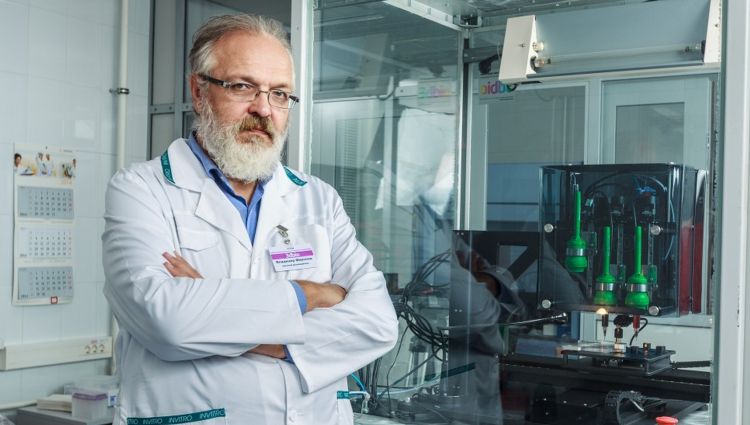Russian scientists to use 3D-bioprinted thyroid gland for transplantation

Russian specialists from 3D Bioprinting Solutions lab are working on a 3D-printing technology for producing thyroid gland that can be transplanted in a living body. The technology has been already tested on muscles, so it’s expected that artificially grown organ will successfully be replanted in human body.
Every year doctors fail to save lives of 25% of patients, who need transplantation of thyroid gland. The reason is that there is a shortage of donor organs. Artificial growing of thyroid gland is an excellent alternative, which will allow saving lots of lives.
Russian scientists from biotechnological laboratory told that a live functional organ can be created with the help of 3D bioprinter FABION. The technology of printing thyroid gland is rather simple – bioprinter syringe is filled with suspension of tissue spheroids, and afterwards the process of organ reproduction begins.
At first a three-dimensional model of the organ is developed, and then data is sent to the printer, indicating where it should place each spheroid. Tissue balls merge together in the process of printing, as oil droplets in water, and form a three-dimensional structure. In such a way scientists can produce viable cartilages, vessels, skin fragments, etc. To create more complicated and volume organs one will have to create vasculature inside them.
For suspension to remain in a definite point of space in the process of printing, it is important to add it into hydrogel, which is called bio-paper by specialists. Different organs require specific hydrogel. In Russia several centers produce various types of bio-paper. Specifically, specialists from 3D Bioprinting Solutions collaborate with suppliers from Pushchino, who offer a wide range of quality samples. Also, representatives of biotechnological lab don’t eliminate the possibility of collaboration with other organizations.
So far, specialists from 3D Bioprinting Solutions have printed thyroid gland for mice, which was successfully transplanted. And now there are plans to test this technology on human body.
It is worth to note that apart from Russia regenerative medicine is developed in 11 other countries of the world. Thus it’s quite possible that transplantation of artificially grown organs will soon solve the problem of donor organs shortage.







